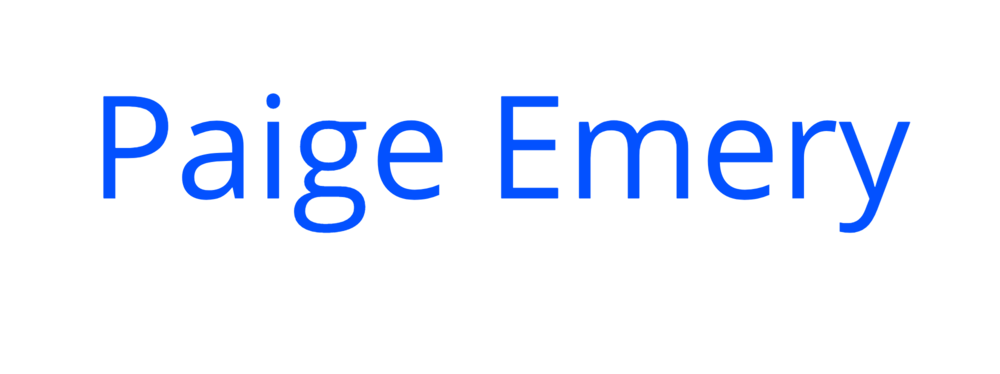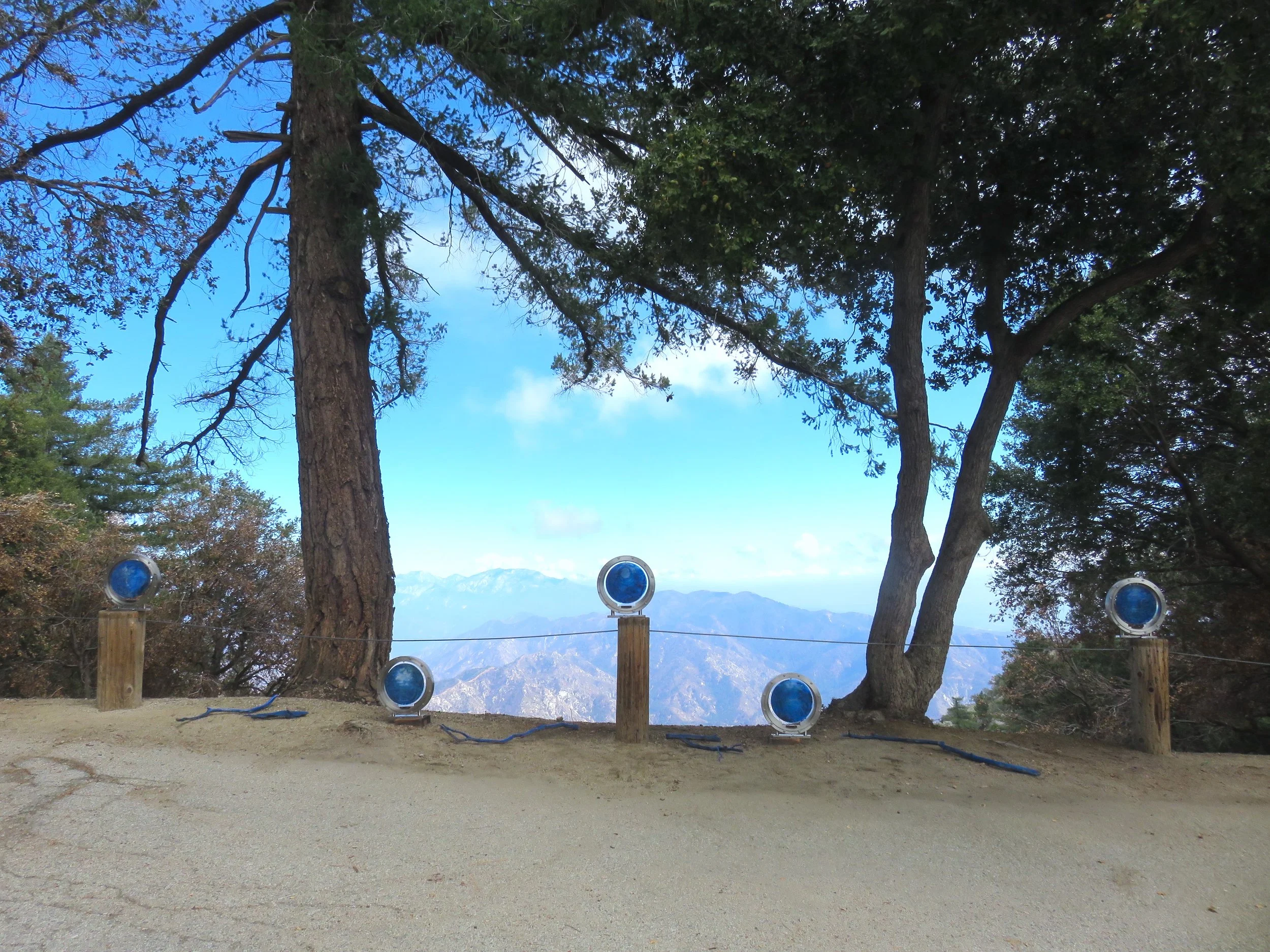
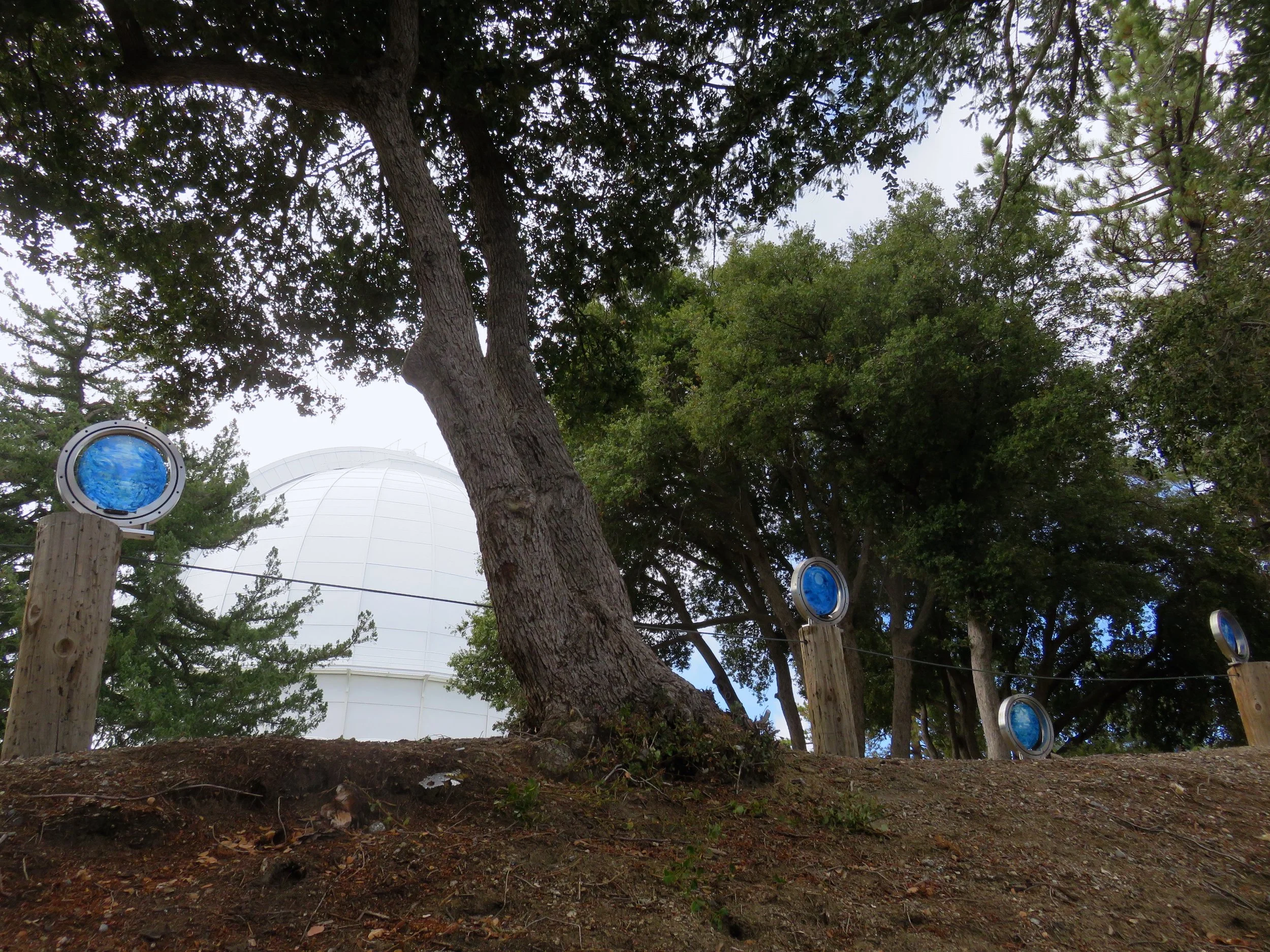
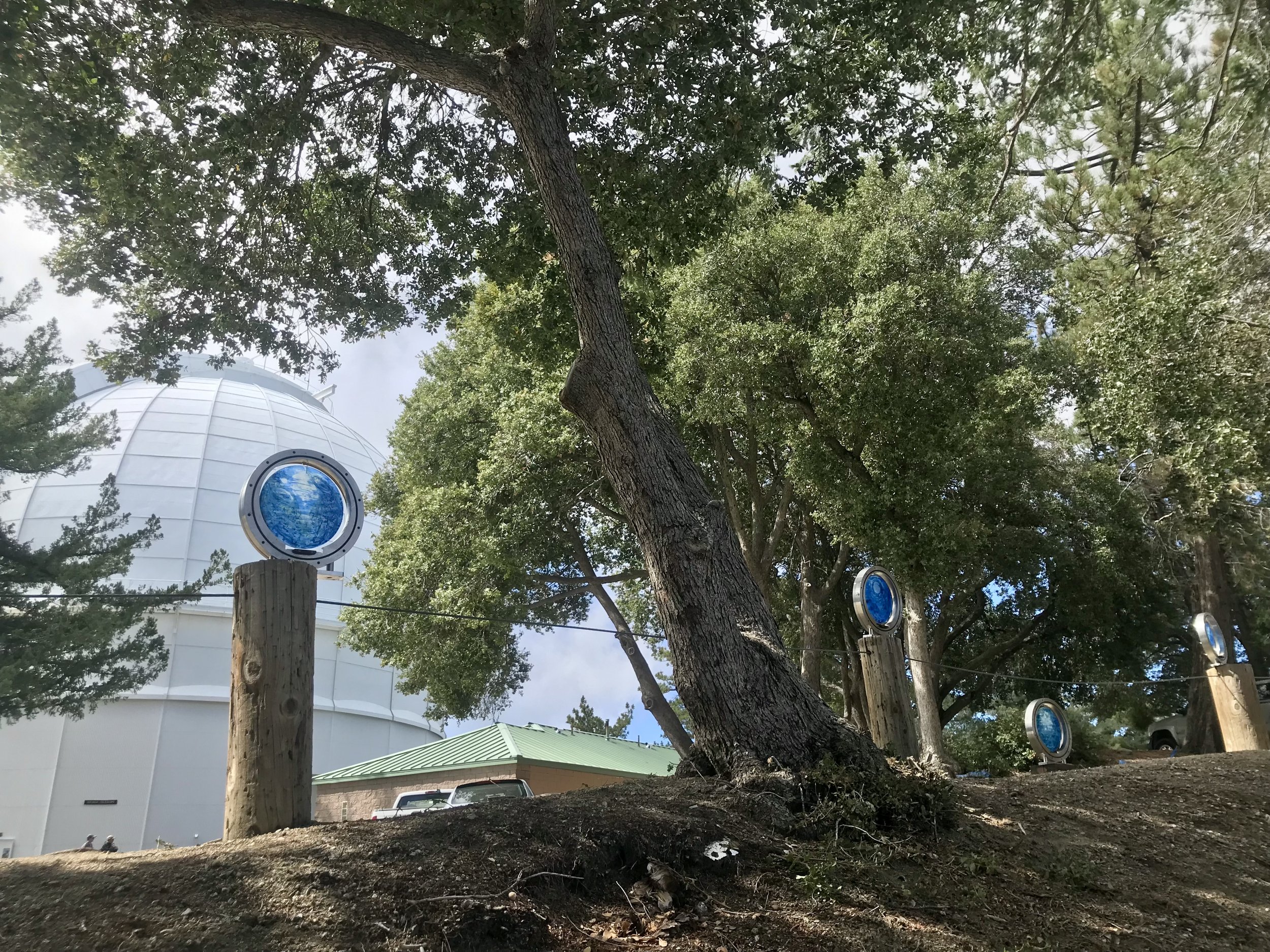
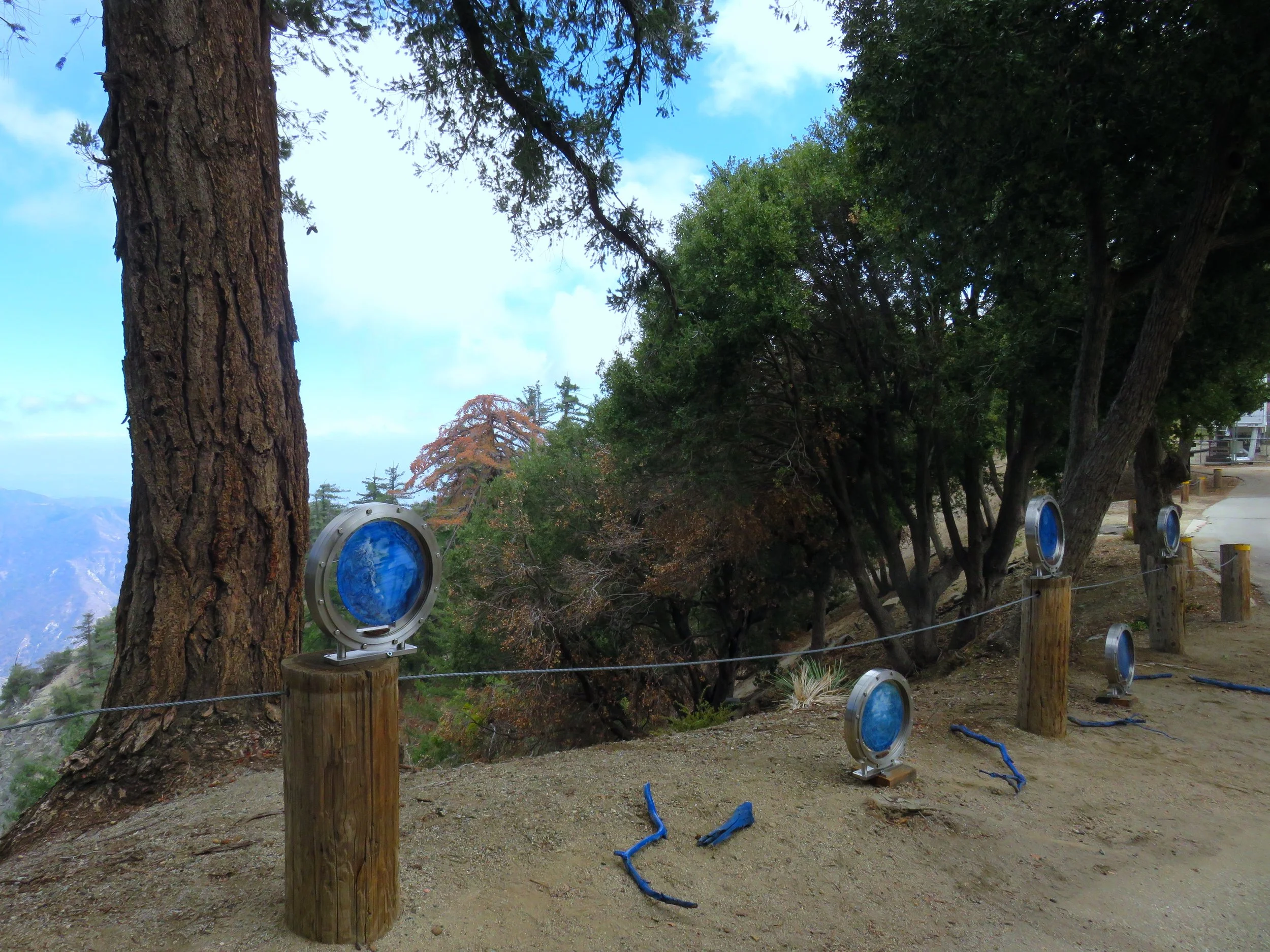
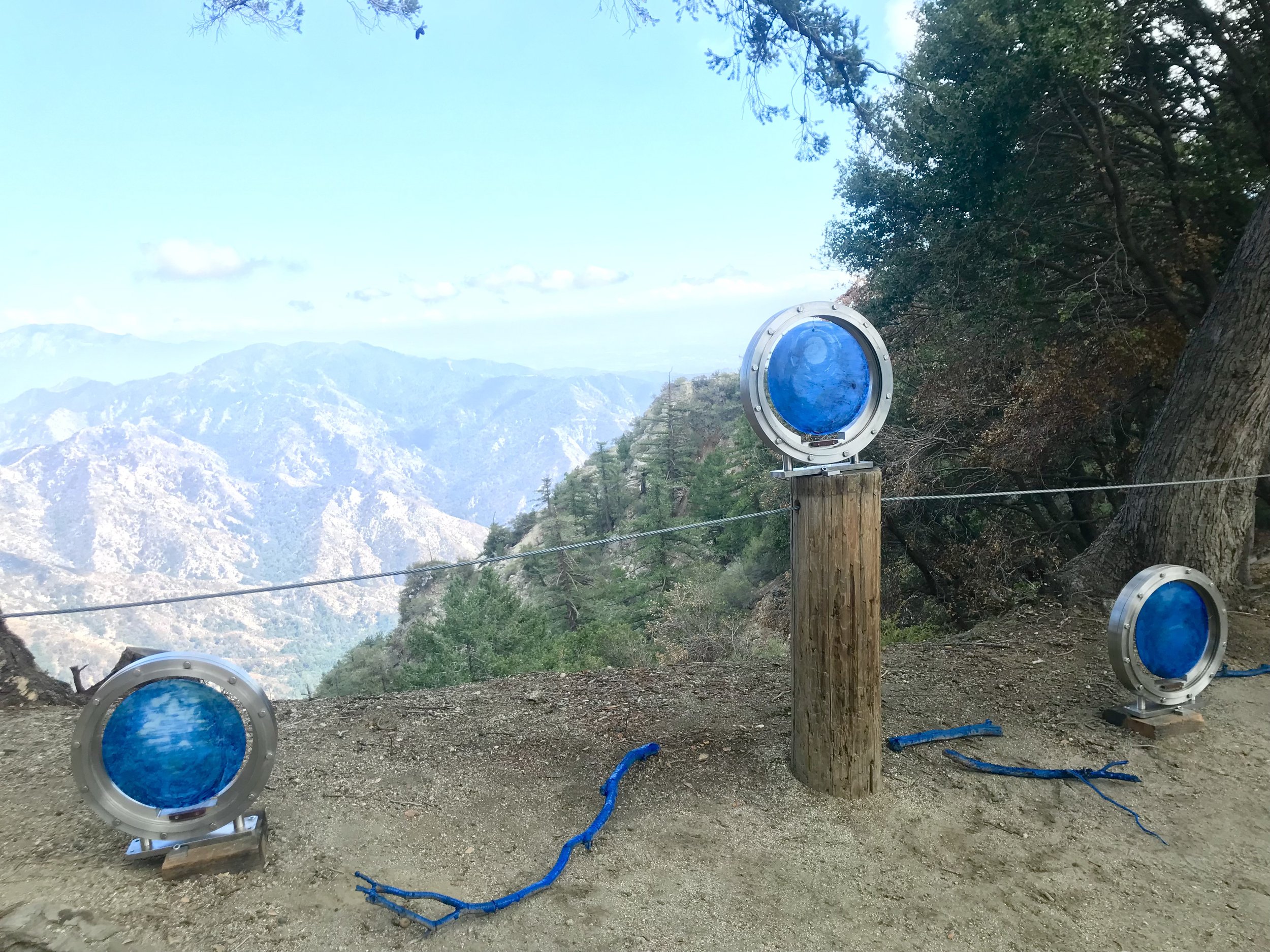
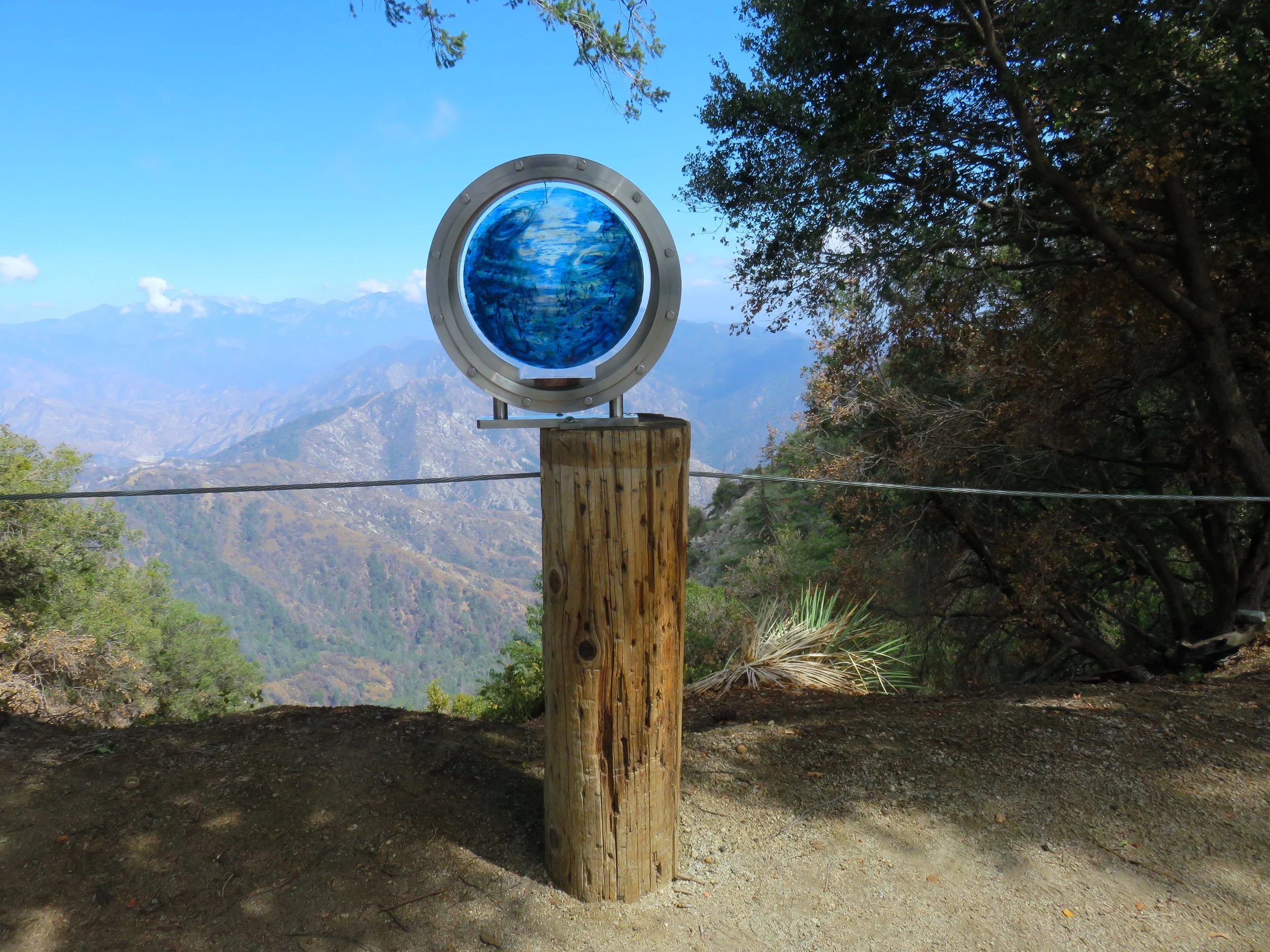
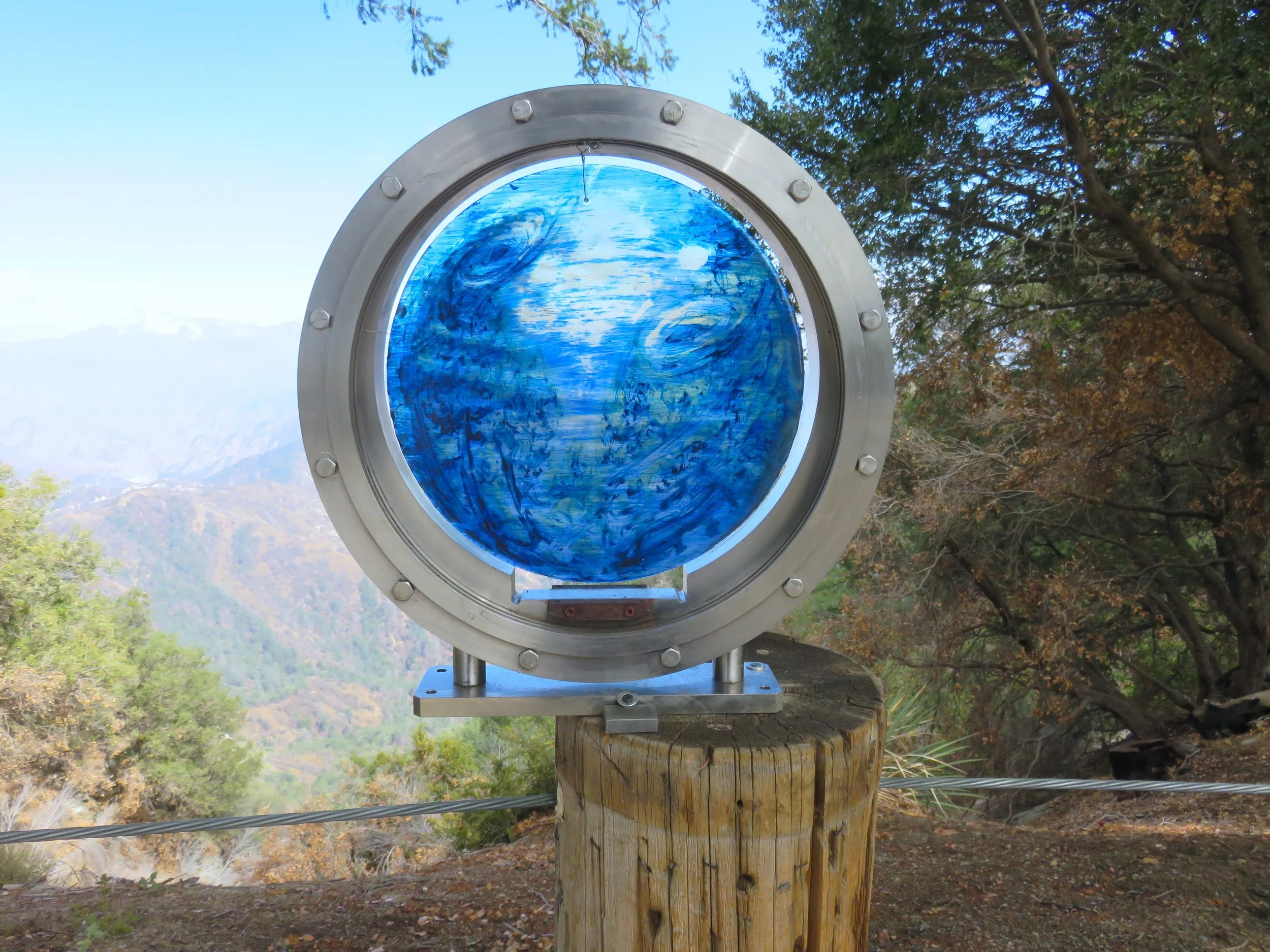
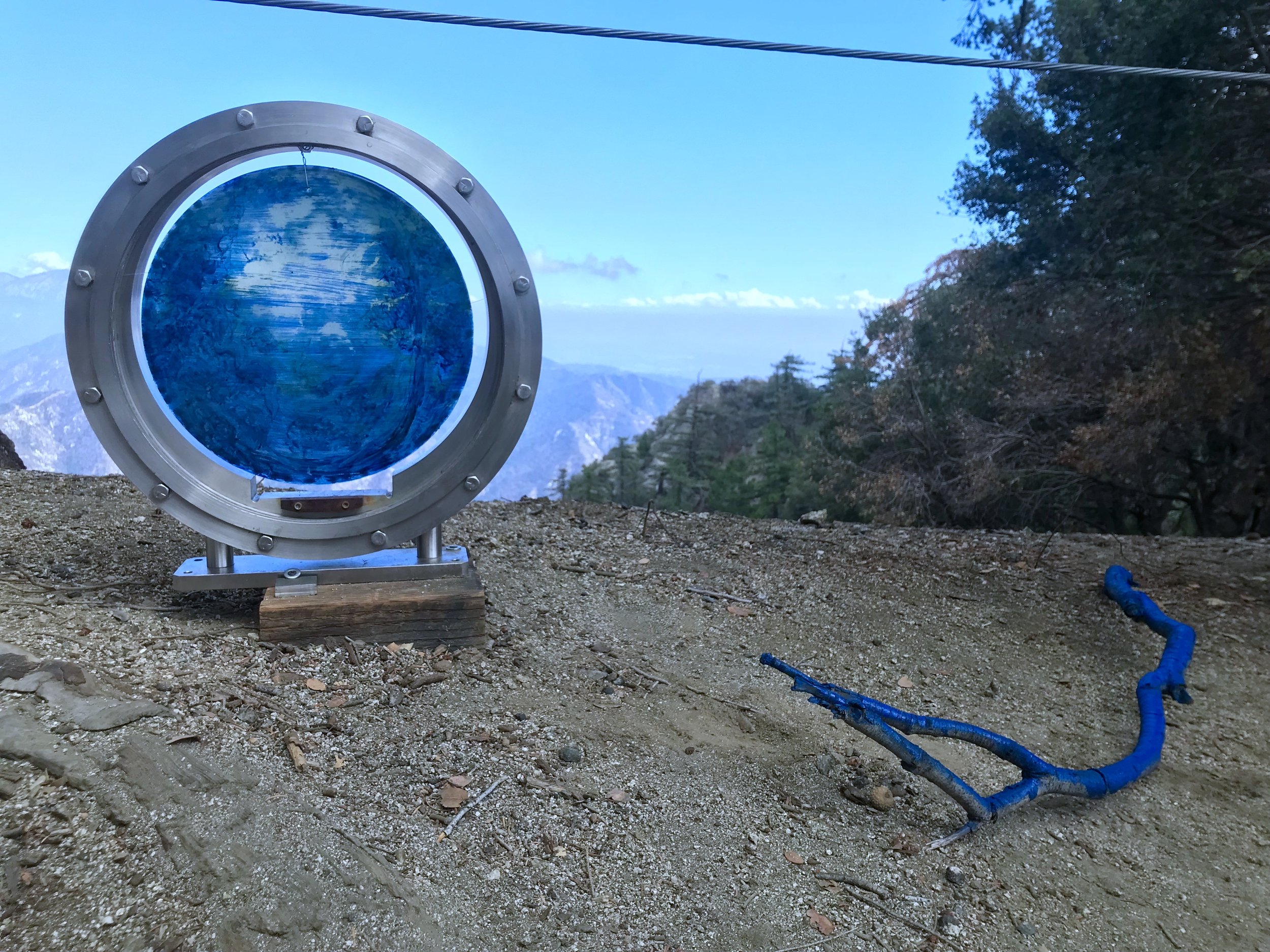
Methods for Descrying, Intimate Eyes that Listen, 2022
Paint made from flowers and oil on glass, copal resin, and metal frame from the vacuum joint for the delay-line from the Mark III interferometer at Mount Wilson
17” x 18” (5 works)
Exhibiting at the historic Mt.Wilson Observatory as part of Fulcrum Festival September 16-October 2nd.
Located outside of the 100” telescope, this is a satellite installation as part of the Supercollider show “Feelers” in Fulcrum Festival 2022.
~~~
𝐌𝐞𝐭𝐡𝐨𝐝𝐬 𝐟𝐨𝐫 𝐃𝐞𝐬𝐜𝐫𝐲𝐢𝐧𝐠, 𝐈𝐧𝐭𝐢𝐦𝐚𝐭𝐞 𝐄𝐲𝐞𝐬 𝐭𝐡𝐚𝐭 𝐋𝐢𝐬𝐭𝐞𝐧
The word “scrying” comes from “descry”, which means seeing something unclear by looking carefully; to catch sight of.
As technologies rapidly develop, the way we capture information changes, and so do the perspectives by which we interpret data.
Scrying is a method of divination by which one gazes into water or glass in a meditative state, employing intuition to pull out images that arise in sensory communion as guidance for the unknown. Unlike other forms of divination that provide counsel for the future in the form of tangible prescriptions, scrying is more of an opening - a practice of how one senses their environment.
Telescopic images are initially black and white and their color is deciphered and applied in post-production. Before the digital age, these images alongside their spectra were imposed on hundreds of thousands of glass plates. Spectra plates are compositions of lines exhibiting the elemental makeup that determines an object’s color. Elemental thumbprints that tell of chroma unseen by human eyes, overseen through a telescopic mirror equivalent to a million eyes.
Engaging in deep presence with one’s environment, scrying is a practice of listening to spaces outside of our conventional thoughtscape. Rational epistemology suspends in comatose to make space for the watery, sensory openness that invites in guidance. The reflective surface dances into shapeforms that resonate to stillness in the mind.
For a century human eyes would read the lines of glass-printed spectra and post-produce colors onto captured images. When this process became digitized in the 90’s, the role of coloring the objects was handed over to computers, changing the relationship with interpretation. We know what the computer reads, but what is our relationship with the unknown?
Divination by scrying does not so much look outwards toward the future, but inwards to better understand one’s relationship with the future.
Cosmos is not necessarily out there and beyond, but embedded in daily life. Looking inwards to see outwards.
The Pine trees watch over the Observatory, they hold the land that is used to gaze outwards as silver eyes shimmer. In the ancient language of trees, Pine trees symbolize long sight to see a vision of what is yet to come, while understanding this seeing comes from the point at which you are rooted.
In regards to cosmotechnics, philosopher Yuk Hui describes intuition as access to the real, where cultivation of intuition improves the capacity of the senses when our sensing is often handed over to digital technologies.
Through a lens of blue, scrying colors the intuition, deep forms of listening in environmental intimacies.
In spectroscopy, a blueshift is when an object is moving towards us. Unknowns coming closer. Alien intimacies.
Otherness is created, but we can dream together with the unknown.
